If there was a Godzilla of the plant world, it just may be slugs. These slimy pests may move slow but they can do a ton of damage. Trust me, my lettuce has seen some pretty bad days! Luckily, I know how to stop slugs from taking over. Here’s everything I know on how to get rid of slugs in the garden, 100% naturally.
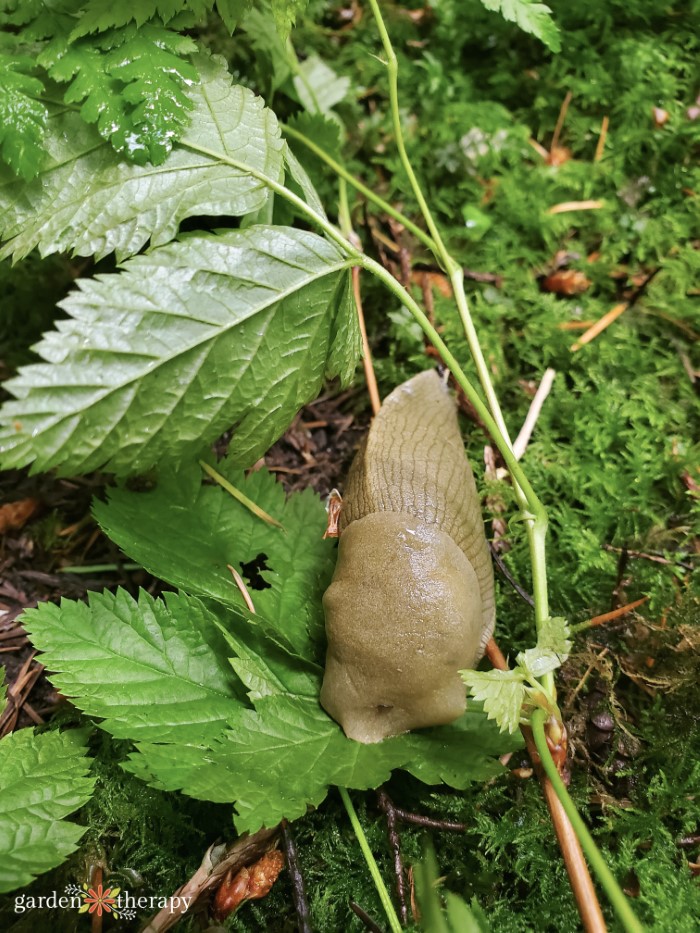
Slugs have always been a favourite of mine. Something about their size and appetite makes me respect these slimy creatures! But there’s nothing worse than accidentally stepping on one because no matter how much you wash, the slime is stuck to you for a good day or so. Bleh!
If you have slugs in the garden and they’re eating more than their fair share, I have quite a few tricks up my sleeves to help get them away from your precious vegetables and out of your garden.
While I’m by no means a slug cheerleader, remember that slugs are part of the natural food chain. Since so many animals, such as toads and birds, feast on slugs, resist the temptation to poison them or use pesticides. This can not only affect those who eat the slugs but may harm surrounding beneficial insects too.
Instead, take the natural route! By the end of this article, you’ll have plenty of tools and knowledge on how to get rid of slugs in the garden.
This post will cover…
- Slugs in the Garden
- What Do Slugs Eat?
- How to Get Rid of Slugs in the Garden Naturally
- Dry it Up
- Change Your Watering Habits
- Change Your Plants
- Handpick the Slugs
- Trap Your Slugs
- Beer Traps
- Use Copper
- Attract Their Predators
- Start Seedlings Indoors
- Frequently Asked Questions About Slugs
- More Posts About Garden Pest Control
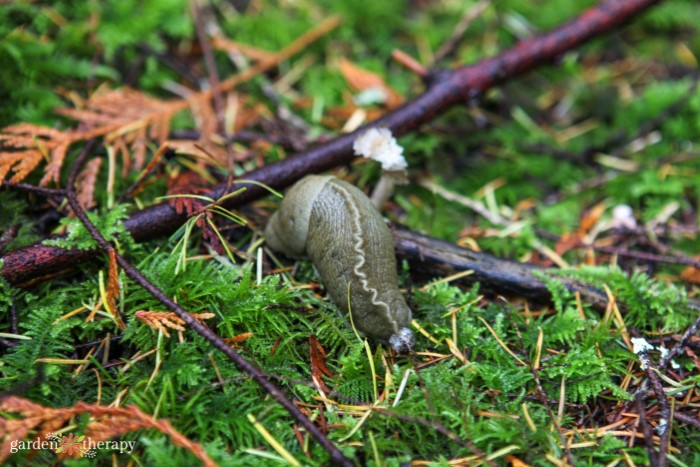
Slugs in the Garden
Essentially a snail without the shell, slugs look like fat worms with slimy and soft bodies. This slime protects their skin from drying up and they often leave trails of it in their wake. On their head, they have two feelers used for vision. And just like snails, they’re not known for their speed.
Most of the time, you can find them in a light brown or grey colour and sometimes with dark spots. You may even spot a super colourful one, like the bright yellow of the banana slug in the Pacific Northwest. These soft-bodied creatures range quite a bit in size, from ¼ inch to more than two inches long.
In the winter, slugs remain as eggs hiding away in protected areas such as plant debris, mulch, rocks, and leaves. In the spring to early summer, the eggs hatch. You can find slugs in the garden from spring to fall in cool, moist, shady areas. They’re most active at night as they don’t like warm or dry conditions.
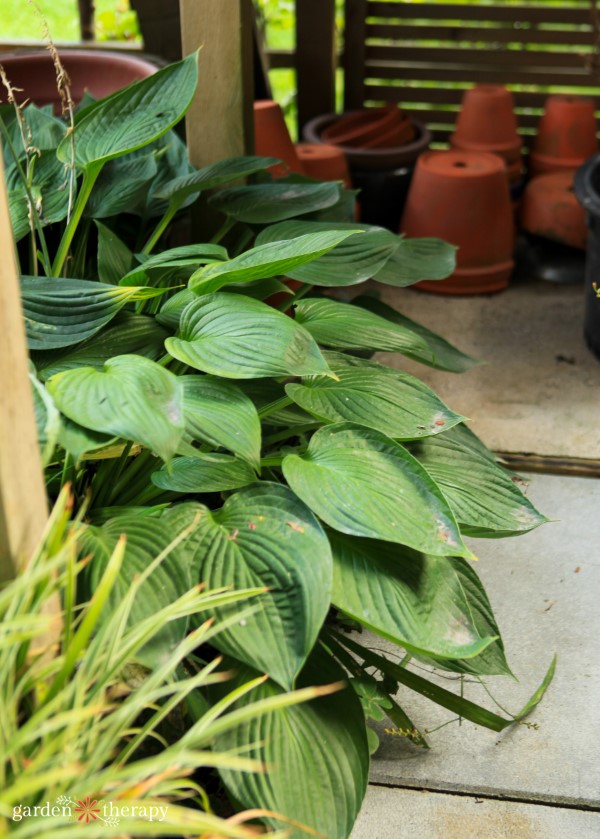
What Do Slugs Eat?
Slugs love to feed on the leaves of plants as well as ripening fruits and veggies and decaying plants on the ground. In particular, they love seedlings and leafy vegetables. Especially susceptible plants include lettuce, cabbage, basil, strawberries, hostas, daylilies, delphiniums, and dahlias. They stick to the shadows so most plants that grow in full sun are fine.
Slugs have thousands of microscopic teeth known as radula. Because of their pointy mouths, they create irregular holes while they eat. While just a little bit of munching won’t damage plants, lots of feeding can severely weaken or kill them, especially seedlings.
If you suspect slugs are feeding on your plants but have yet to spot them, try going out at night. They tend to be more active once the sun goes down. Use a flashlight to help locate them and look for their slimy trails shimmering. Yuck!
How to Get Rid of Slugs in the Garden Naturally
If slugs have taken over, don’t panic. There are quite a few effective methods at getting rid of them and they’re certainly not the worst pest to have in the garden. Here are tips to help you get rid of an infestation. Plus, I’ve included ideas on prevention which is so much more important!
Dry it Up
Since slugs love moist conditions, try to make your garden less of a wet haven for them. Eliminate ground cover in wet areas as it shades the soil and keeps things cool and moist for slugs to live in.
You can also prune lower branches on trees and shrubs to allow for more sunlight to stream through. Divide any plants to allow more air circulation. Add stakes to plants to help keep them off the soil and away from slug access.
For the soil, you can improve drainage by adding in compost. Mulch locks in water, so remove any excess mulch and plant debris to another area of the garden not affected by slugs.
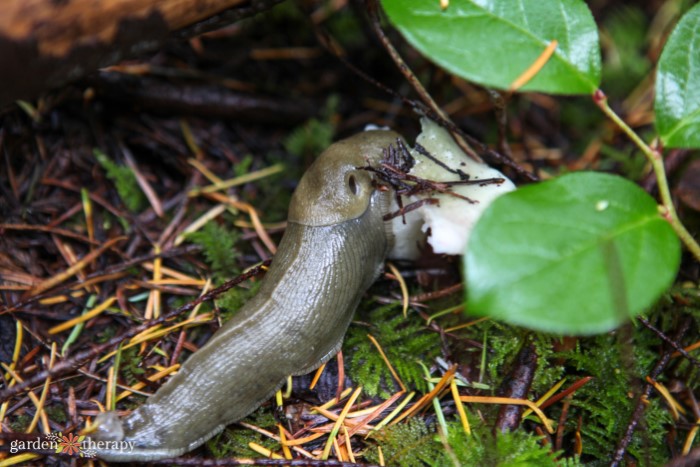
Change Your Watering Habits
To further avoid extra wetness, consider your watering habits and if they could be changed. Water in the morning so that plants have time to dry out throughout the day and absorb the water. Always water at the base of the plant and not overhead. Use drip irrigation or water by hand.
Change Your Plants
If slugs can’t get enough of your plants, try planting something else. Slugs tend to avoid plants that like full sun so try to move any plants that can tolerate full sun into these conditions.
In their place, look for drought-tolerant plants so that you can water the area less often and make the area less hospitable for slugs. You can also look for shady plants that slugs don’t like such as ferns, ornamental grasses, phlox, clematis, and bleeding heart. Slugs also don’t like trees and shrubs as much.
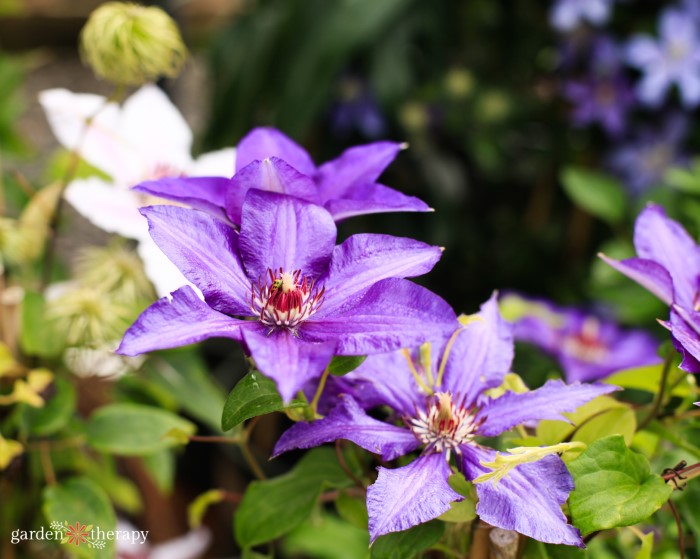
Handpick the Slugs
If you have big slugs or not very many, you can actually handpick them off of your plants. Look under leaves, rocks, and debris to find them in their hiding spots. Once picked, drown them in soapy water or crush them.
Trap Your Slugs
Slugs are amazing at hide and seek so use that to your advantage. They like to hide out under containers, boards, and flat stones. I like to layout a flat wooden board to attract them. The next morning, I’ll lift it up and scoop up and kill any that are hiding. Lay the board back down and repeat until you get them all.
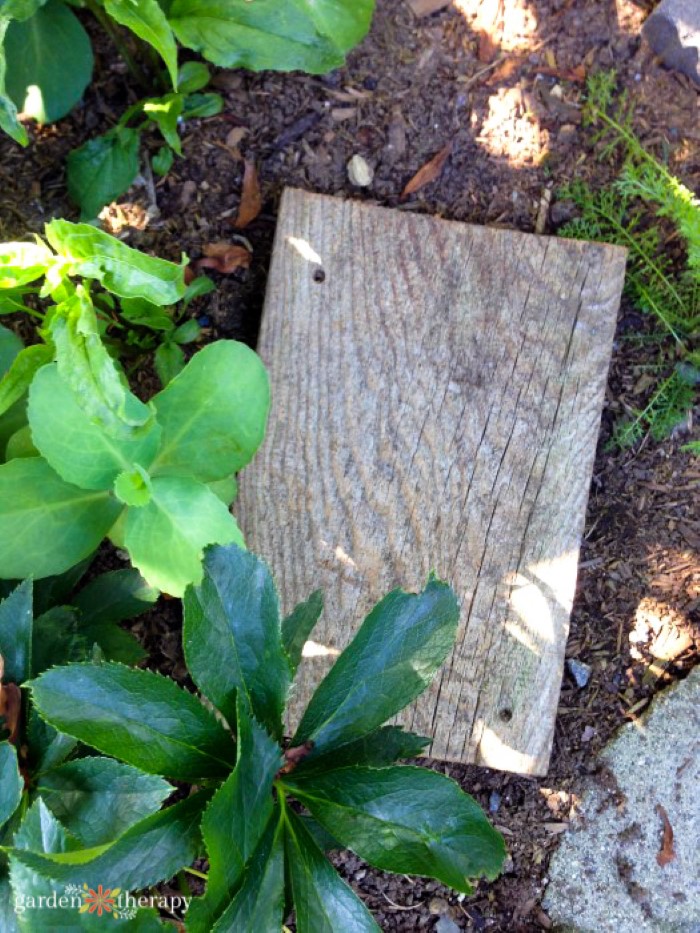
Beer Traps
Slugs LOVE beer. You can trick them by burying a container so that it’s level with the ground or use a shallow tray full of beer. Slugs are attracted to the fermented smell and will drown themselves in the liquid when they go to seek it out. Check these beer traps often and replace them until no longer needed.
Use Copper
Copper can actually deter slugs as the metal reacts with their mucus. You can buy these copper strips just for slugs, but make sure they are wide enough for the whole slug when purchasing. Place these strips horizontally or vertically. This prevention method works best for small gardens and containers.
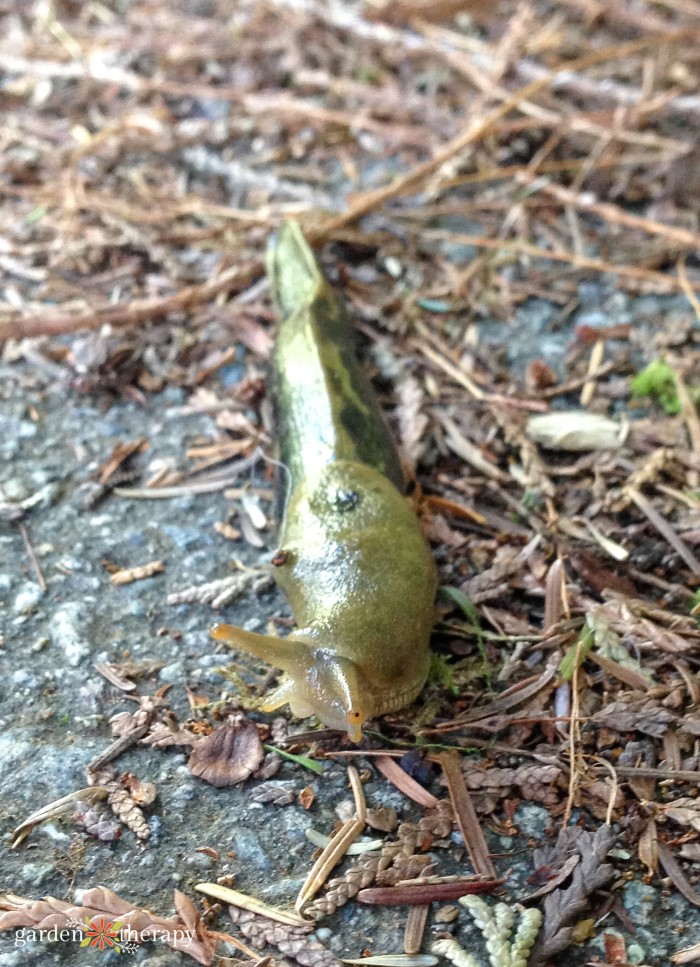
Attract Their Predators
If you have lots of slugs or find them returning year after year, invite those next up on the food chain to take care of things for you.
Beetles, snakes, toads, turtles, and birds all like to feast on slugs. Find out how you can make your garden a more friendly place for these animals and they will happily come in and eat your slugs.
Start Seedlings Indoors
Seedlings are a slug favourite and the most suspectable to slug damage. Try to start your seedlings indoors and let them grow as big as you can manage inside so that they’re strong enough to withstand slug damage. You can also plant them in raised beds to avoid slugs as well. I grow my lettuce in a wine barrel just to keep them away from slugs!
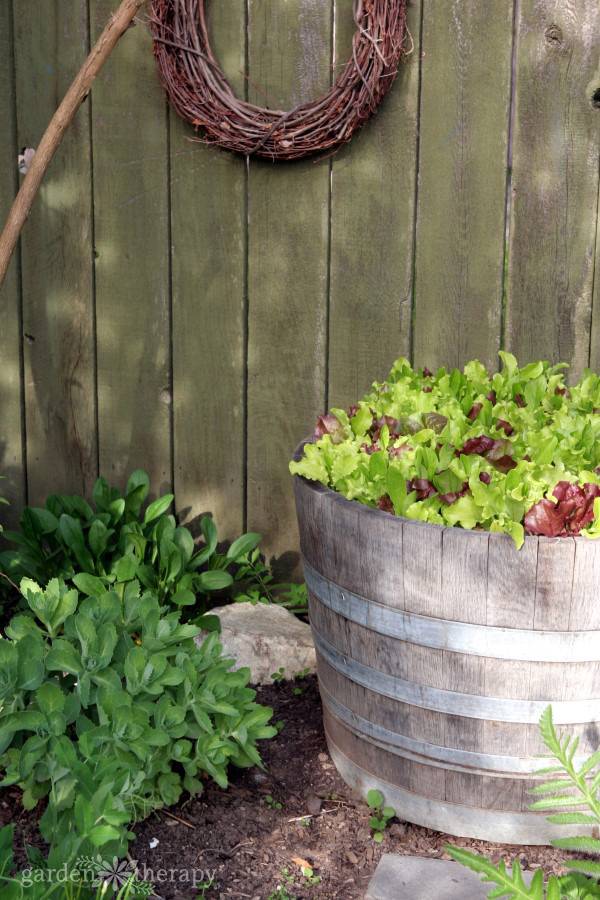
Frequently Asked Questions About Slugs
Slugs do not have traditional noses. They have two tentacles with nostrils that they use to smell as well as two tentacles at the top of their head that are used for sight. This sometimes has people believe that slugs have four noses which is not true.
Slugs in the garden are nontoxic, so you shouldn’t be too worried if you come across one or you find your pet munching away on a slug body. Their slime can carry parasites (most often ringworm) so if you do touch one or its slime, be sure to wash your hands thoroughly.
Slugs are hatched from eggs in the spring and early summer. They’re attracted to cool and moist conditions, most often found in the shady parts of the garden in wet soil. You can also find them in compost bins, under rocks, amongst decaying plants, and on your tender plants.
Snails have approximately 27,000 teeth! Their flexible, microscopic teeth are known as radula. They routinely lose and replace these teeth as needed.
Let me know which of these natural methods you use to get rid of your slugs. And if you have any other methods, please leave them in the comments down below to help everyone out with their slug problem.

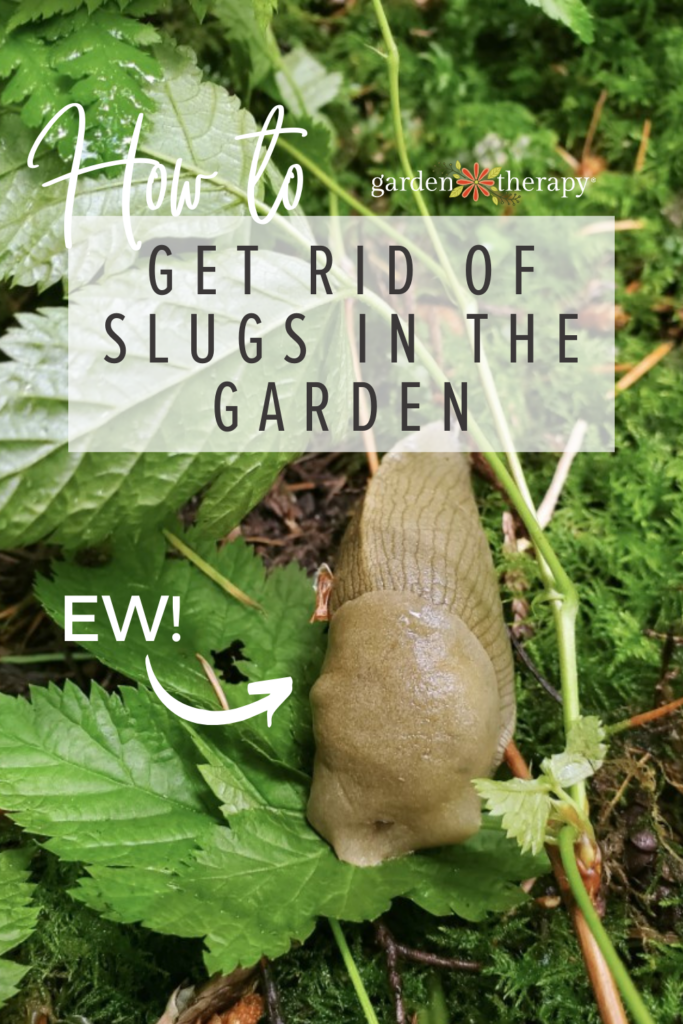



Thanks for all of this good information! I do put out beer in old cat food cans but you’ve given me a lot more “ammunition” in this article!
The board idea works great! I prefer to gather up the slugs and relocate them to a wild area on a walk. We have a choice, to take a life or save a life:)
Stephanie Rose:
Hope you are feeling better and looking forward to spring and summer this year.
I use eggshells (washed then dried well) crush them up into small-medium pieces and sprinkle them where I see or have seen snails. I replace these crushed eggshells after a rain or as needed. Yes I use lots of shells but save them year long so as not to run out!
Take care and enjoy the day
Yvonne
I have heard that slugs are very attracted to unbaked bread dough. Perhaps it is the yeast that promises them something tasty… but I am going to try that in traps made of recycled Imperial Cheese containers turned upside down with a ‘door’ cut out of a side.
Wish me luck. When I grew big beds of daylilies at our cabin I would go out in the morning with a jar of water with ammonia mixed in it. I sometimes handpicked hundreds of small slugs every day that I was there and when I got to 1000 I would allow myself a treat. In my case, being a quilter, I would go out and buy some new fabric.
I like the board idea, it’s cruelty free. But drowning a slug isn’t. I get that slugs are repulsive to humans not only because of the damage they do to plants but because of their slimy appearance. This isn’t there fault.
They are still living breathing creatures who don’t deserve to be killed unless it’s part of the natural food chain. They are also beneficial in eating dead leaves and debris so please don’t encourage your readers to harm them.